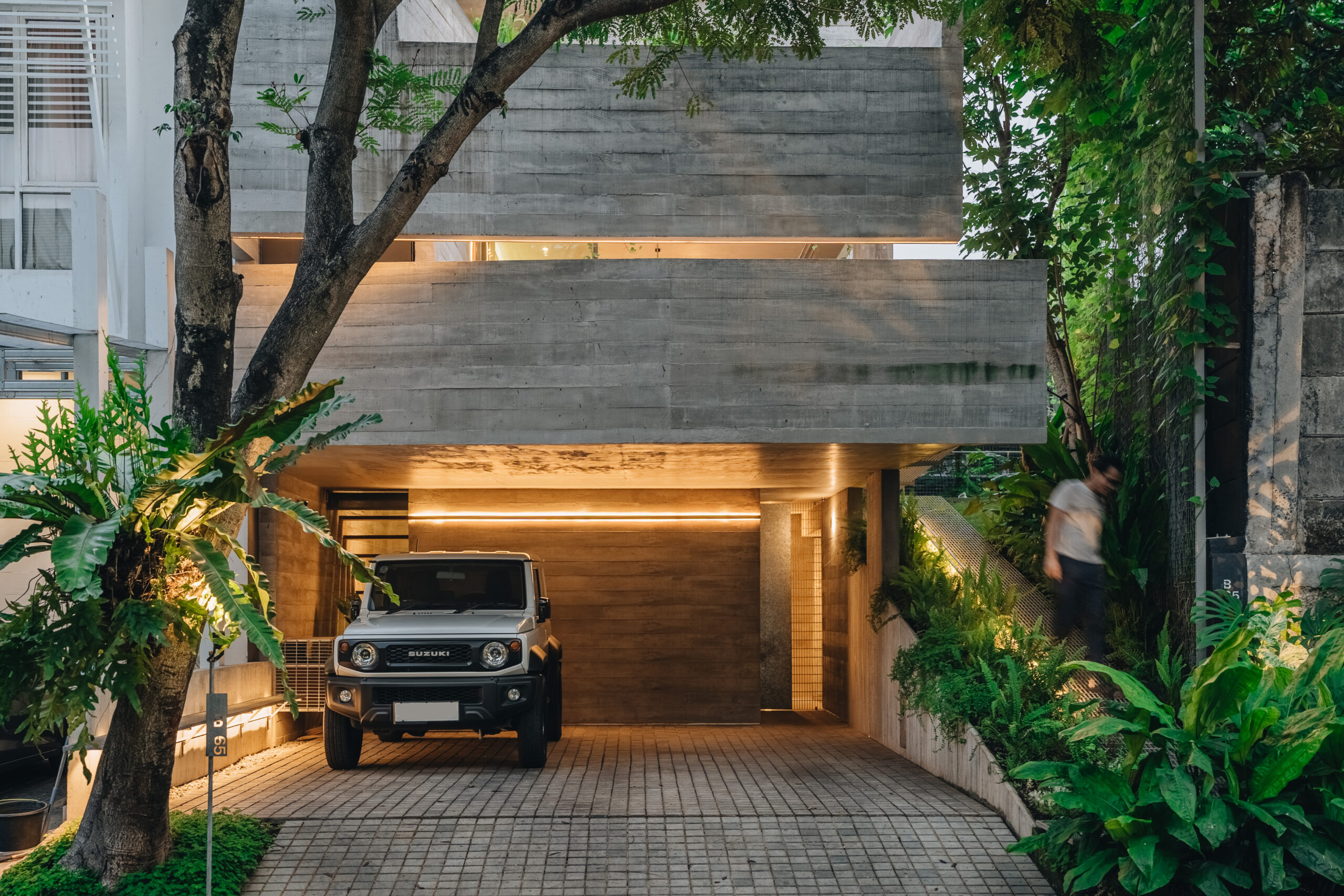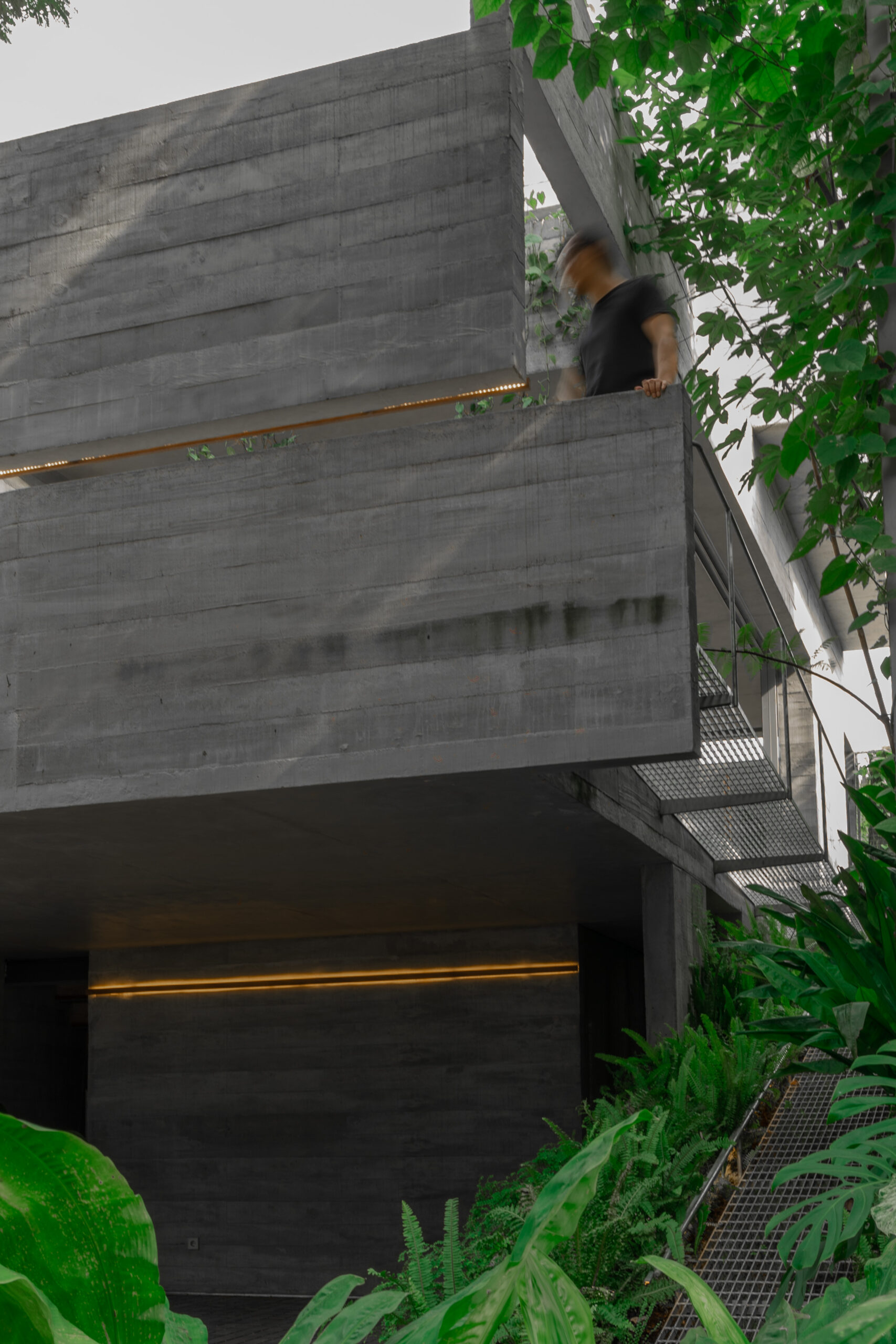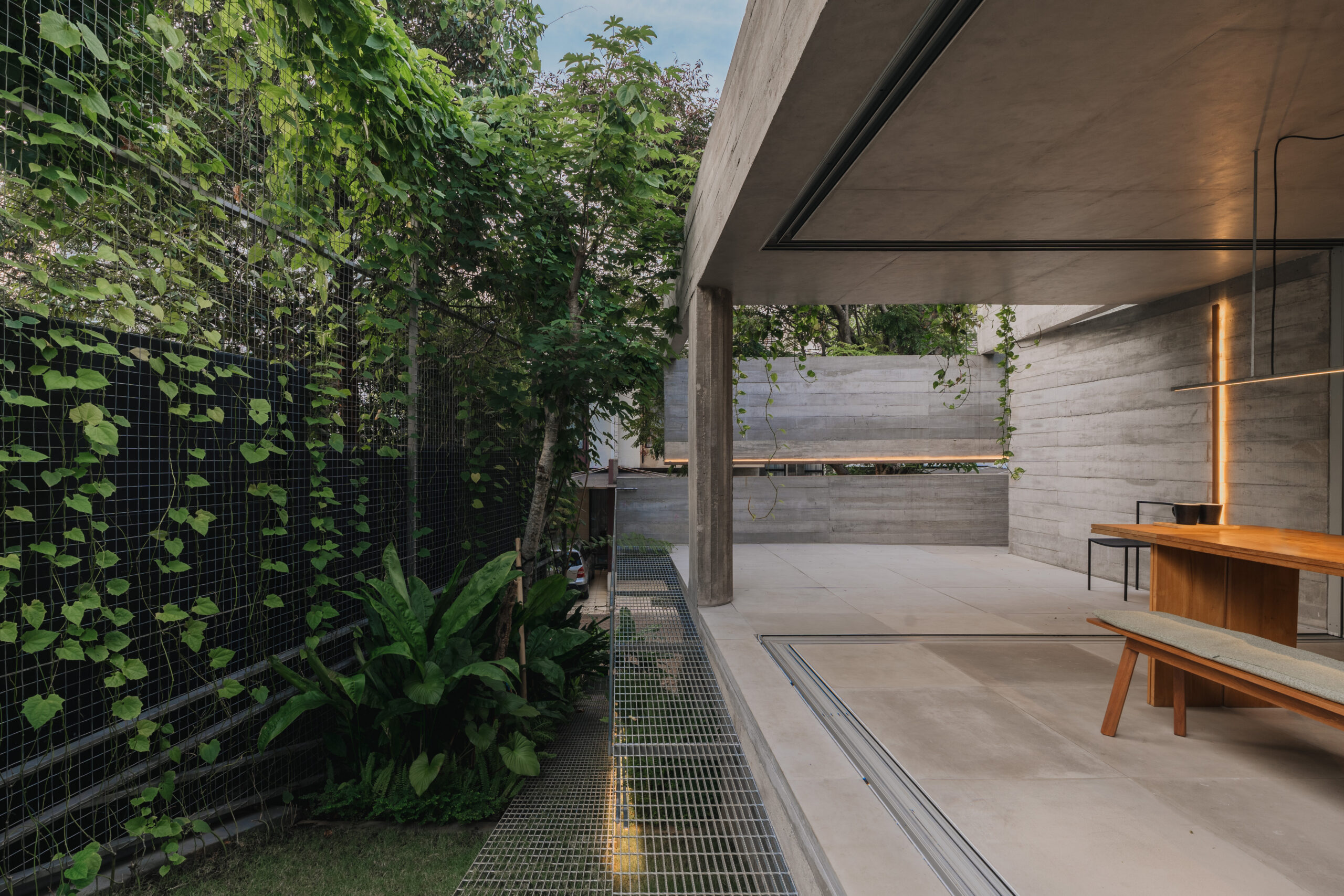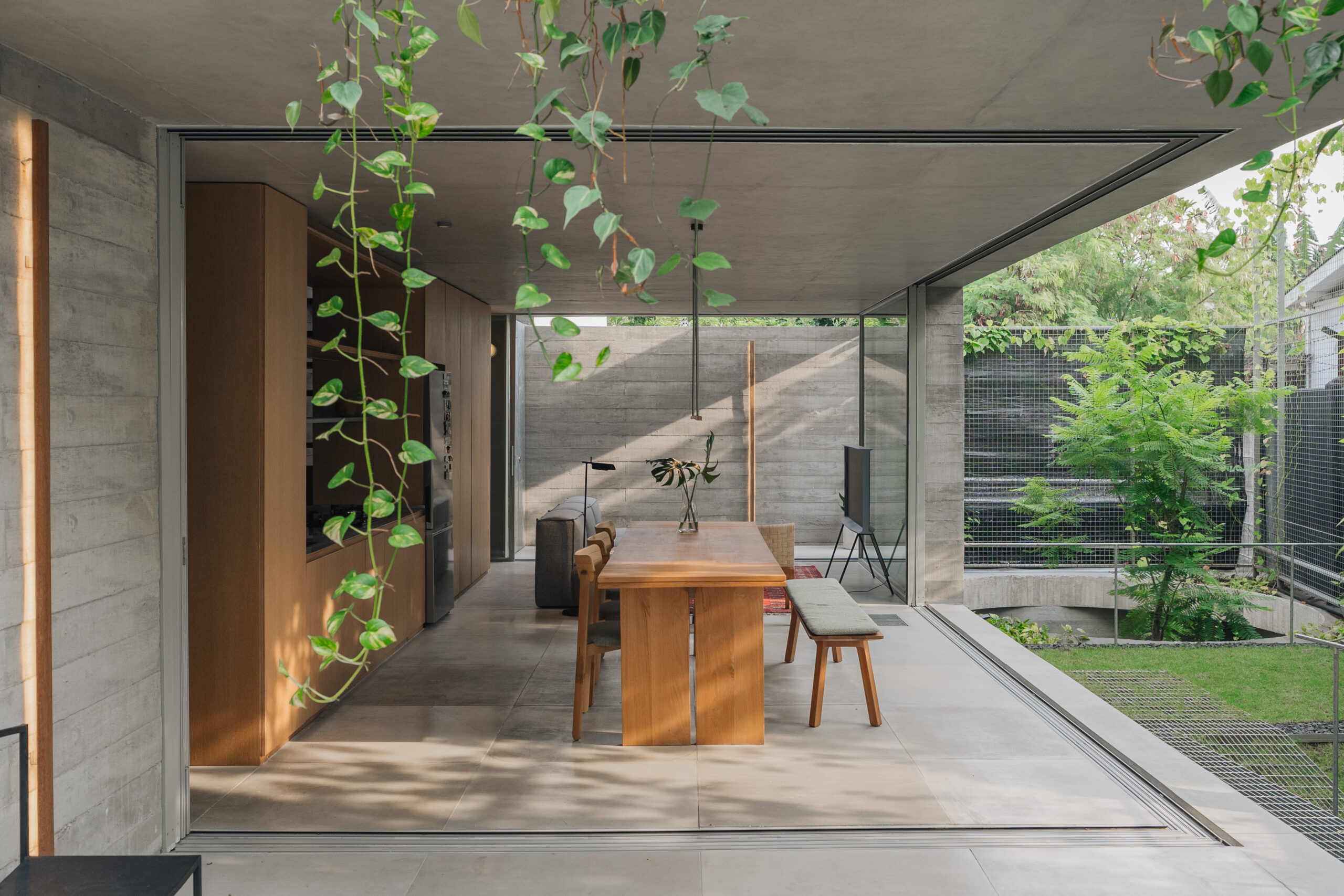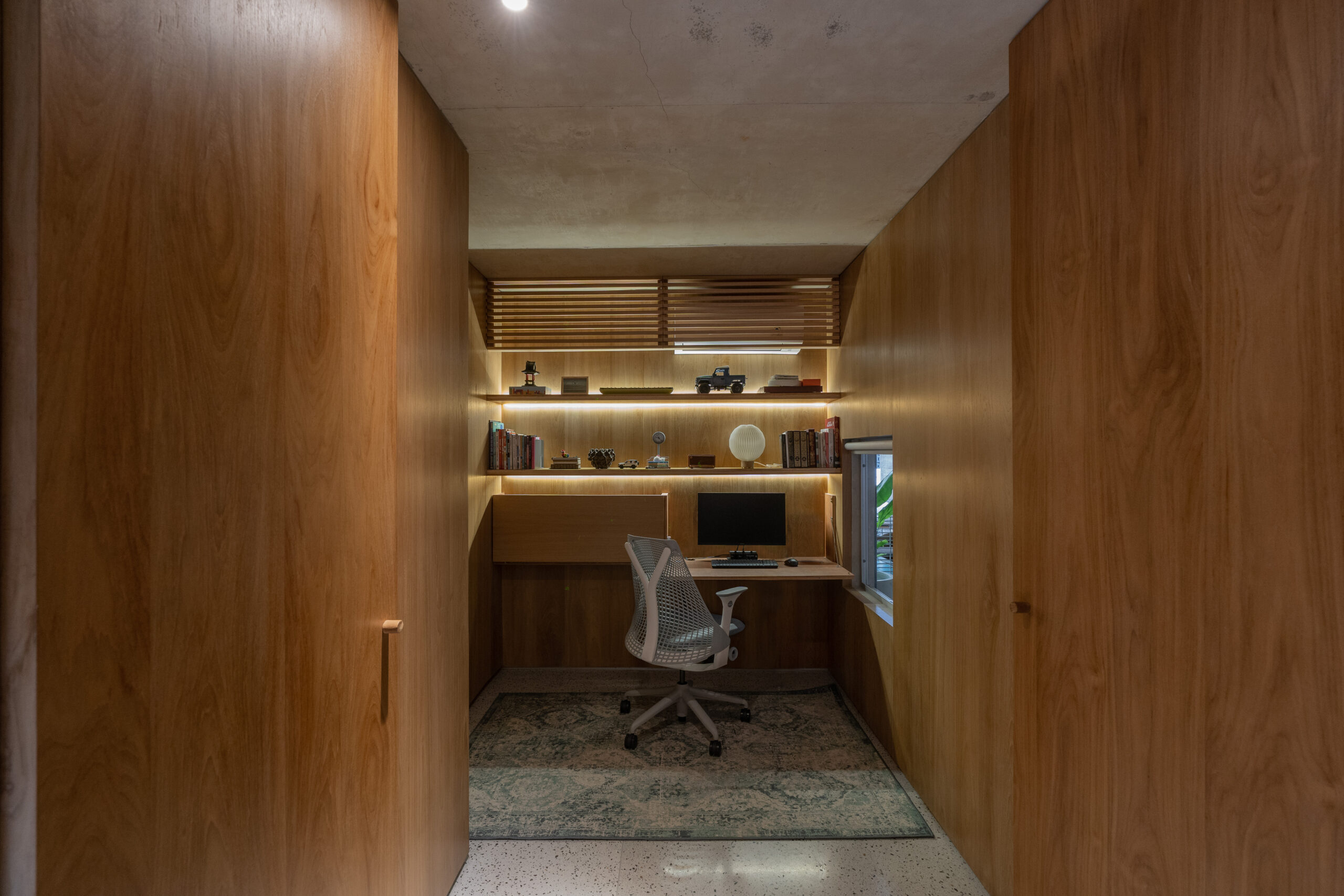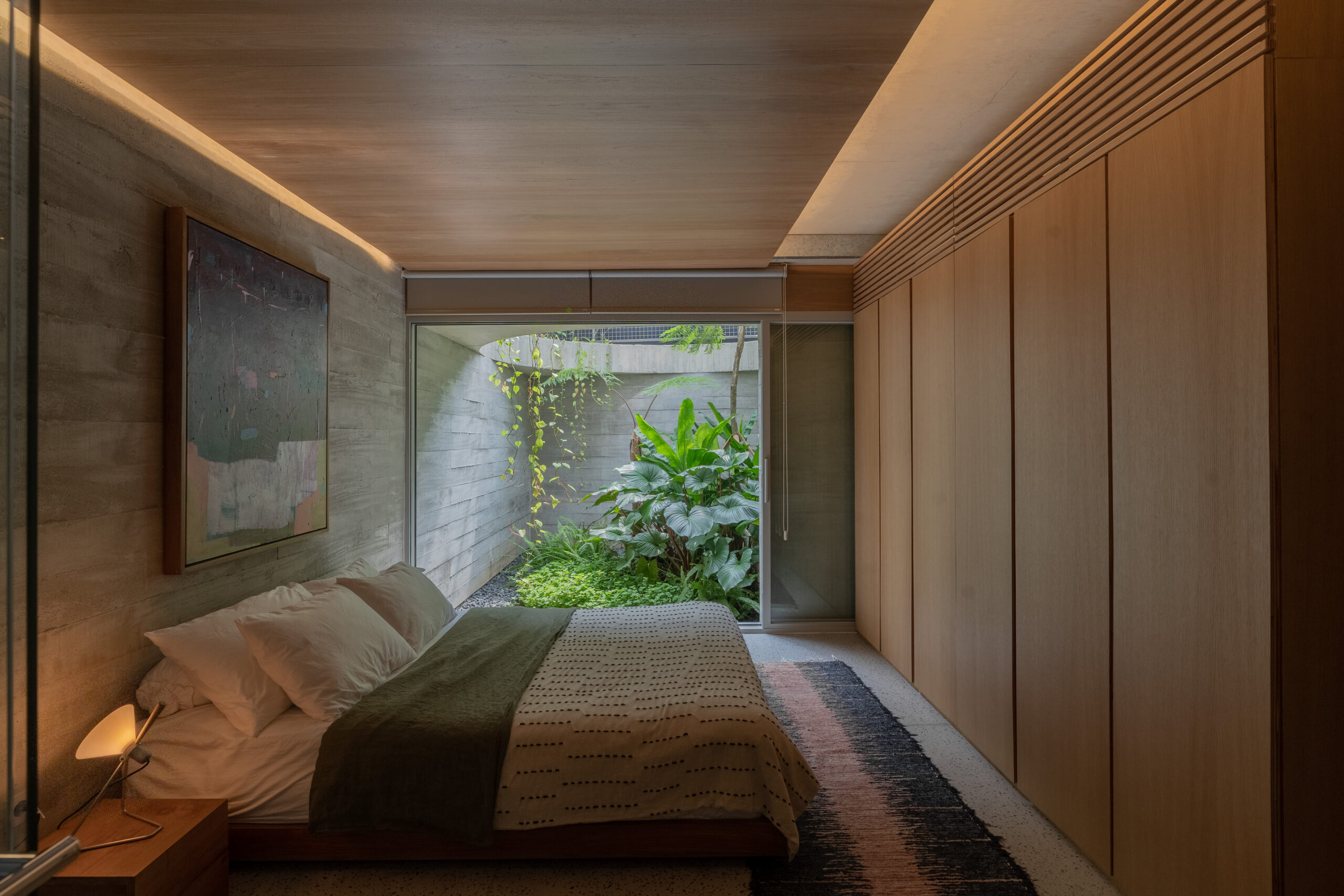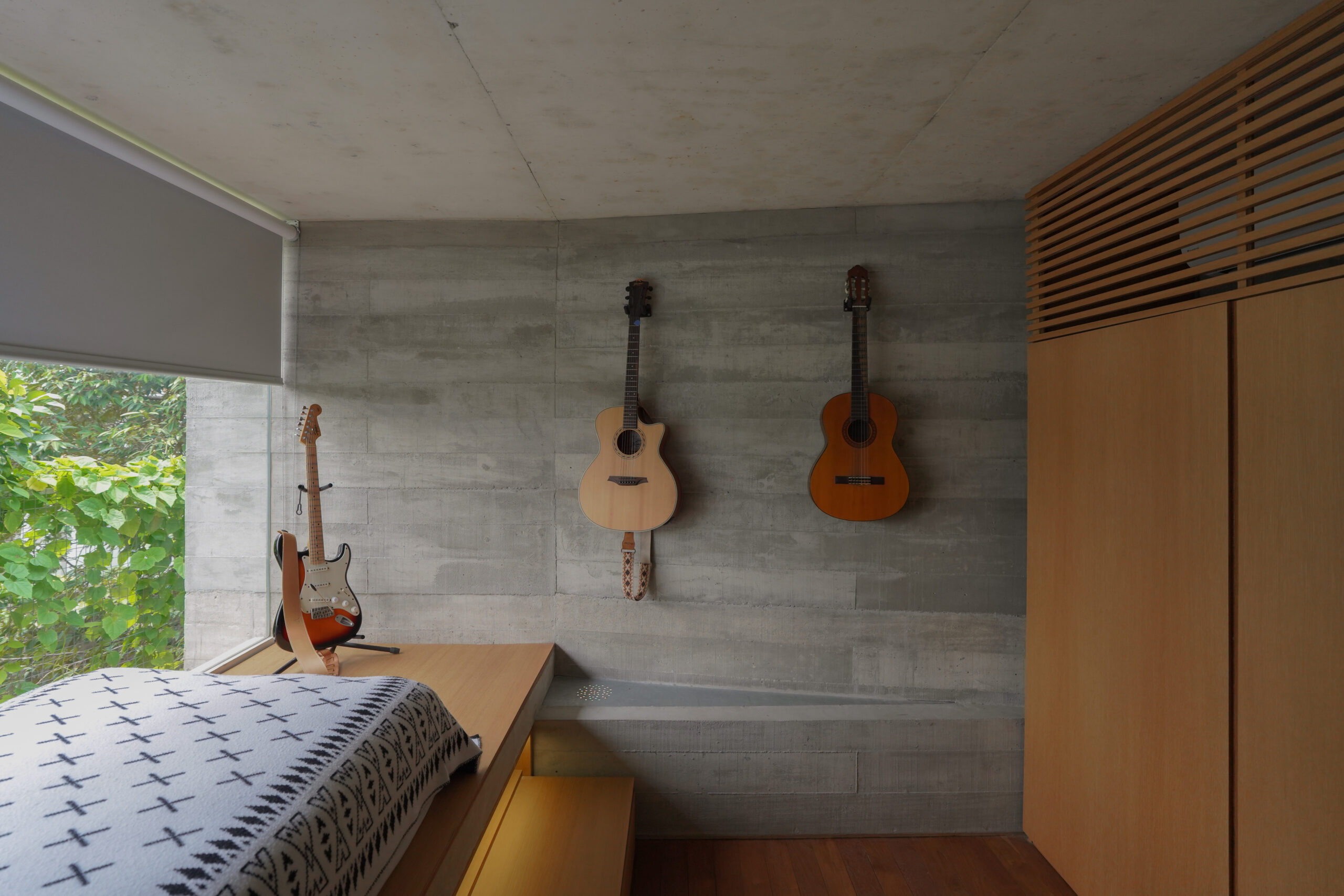| PROJECT | : | RAAGA House |
| TYPE | : | Residential |
| SIZE | : | 190 sqm |
| CLIENT | : | The Architect |
| LOCATION | : | South Tangerang, Indonesia |
| STATUS | : | Completed |
RAAGA House is a house owned by the architect and his family, situated at the end of a residential area with the trapezodial land shape. The elevation of the site is lower than the neighboring land and becomes an idea for the unconventional design approach. The existing Flamboyant tree in front of the site is kept to shade the house throughout the day.
The house is designed with a modern house concept features into the contemporary layout. The spatial layout is divided into two parts: the main part of the space acts as another living space functions, and the other part is a continuous landscape connecting the other spaces. The continuous landscape acts as of a key element enhancing air circulation and good ventilation throughout the house.
The ground floor consists of carport, storage, studio, and master bedroom at the back side of the layout. The placement of the master bedroom on this floor as the primary orientation facing the inner courtyard makes this a serenely private space with natural light entering through the circular void and gives the peaceful impression of space.
Ramp as the main entrance to the living room on the second floor that is blended with the landscape, which enriches the sequence of spatial experiences with natural ambience. At the end of the ramp, the circular void functions to connect the main bedroom to the lower garden and dining area. All the opening spaces in the living room create a continuous space between the interior and the garden, with the area linked to a terrace on both sides as an extended space for multifunctional family events.
On the third floor, it consists of two kids bedrooms, a bathroom, and a roof garden. The bed frame in the children’s room uses a cantilevered concrete slab with a large opening towards the side garden. On this floor, we will find many geometric-shaped skylights as a main concept throughout the house. The building mass on this floor was pulled back to give a human-scale impression to the facade of the house.
The main material used in this house is exposed concrete with wooden plank formwork. This material becomes a strong design character for this house. For other materials, we are using concrete slab, terrazzo, teak wood, grating, galvanized plate, and aluminum window frame. This material selection creates monotonous neutral color harmony as a blank canvas that can be easily combined with other colors.
This house tries to develop a design approach through simple mass composition designs with various space scales in order to create memorable spatial experiences.
